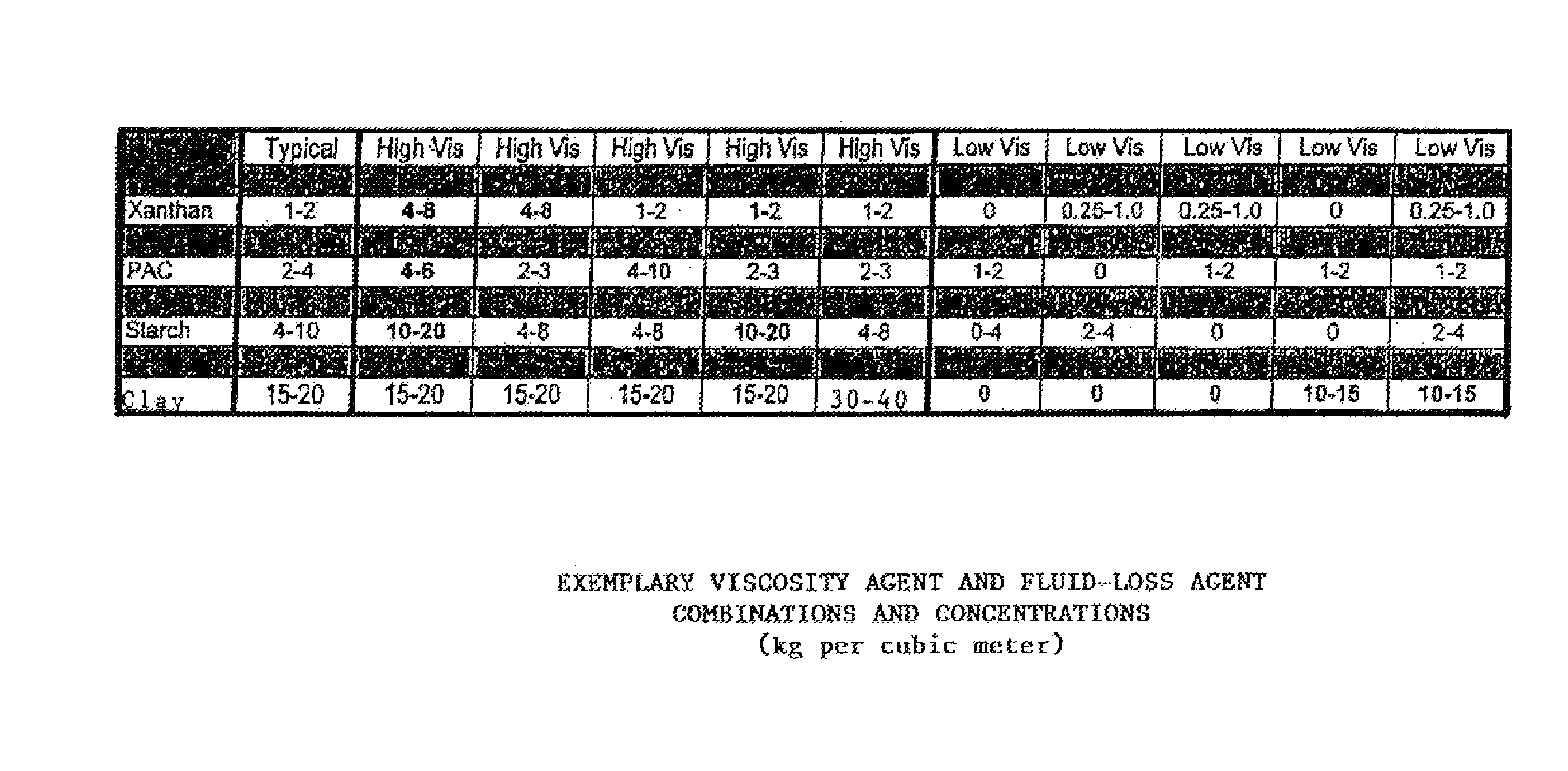Emulsified polymer drilling fluid and methods of preparation
a drilling fluid and polymer technology, applied in the field of drilling fluids, can solve the problems of increasing viscosity, reducing viscosity, oil thick and heavy, and difficult recovery, and achieve the effect of enhancing the ability of drilling fluid to emulsify bitumen
- Summary
- Abstract
- Description
- Claims
- Application Information
AI Technical Summary
Benefits of technology
Problems solved by technology
Method used
Image
Examples
Embodiment Construction
[0037]The essential and optional constituents of the drilling fluids of the present invention have been set out above. The invention does not require these constituents to be combined in specific relative proportions or set formations. The proportions of each constituent, as well as the selection of optional constituents, will be variable depending on the particular characteristics of the subsurface materials through which a well using the drilling fluid is being drilled, and also depending on particular drilling fluid characteristics that the user may wish to obtain. However, typical ranges for the concentrations of the various constituents are set out below, along with examples of specific materials that may be used for the constituents.
[0038]In preferred embodiments of the drilling fluid of the invention, the viscosity agent may be PAC (polyanionic cellulose), clay, starch, or xanthan gum. Where a clay is used as a viscosity agent, it will be a clay of a type adapted for or known...
PUM
| Property | Measurement | Unit |
|---|---|---|
| concentration | aaaaa | aaaaa |
| concentration | aaaaa | aaaaa |
| concentration | aaaaa | aaaaa |
Abstract
Description
Claims
Application Information
 Login to View More
Login to View More - R&D
- Intellectual Property
- Life Sciences
- Materials
- Tech Scout
- Unparalleled Data Quality
- Higher Quality Content
- 60% Fewer Hallucinations
Browse by: Latest US Patents, China's latest patents, Technical Efficacy Thesaurus, Application Domain, Technology Topic, Popular Technical Reports.
© 2025 PatSnap. All rights reserved.Legal|Privacy policy|Modern Slavery Act Transparency Statement|Sitemap|About US| Contact US: help@patsnap.com


